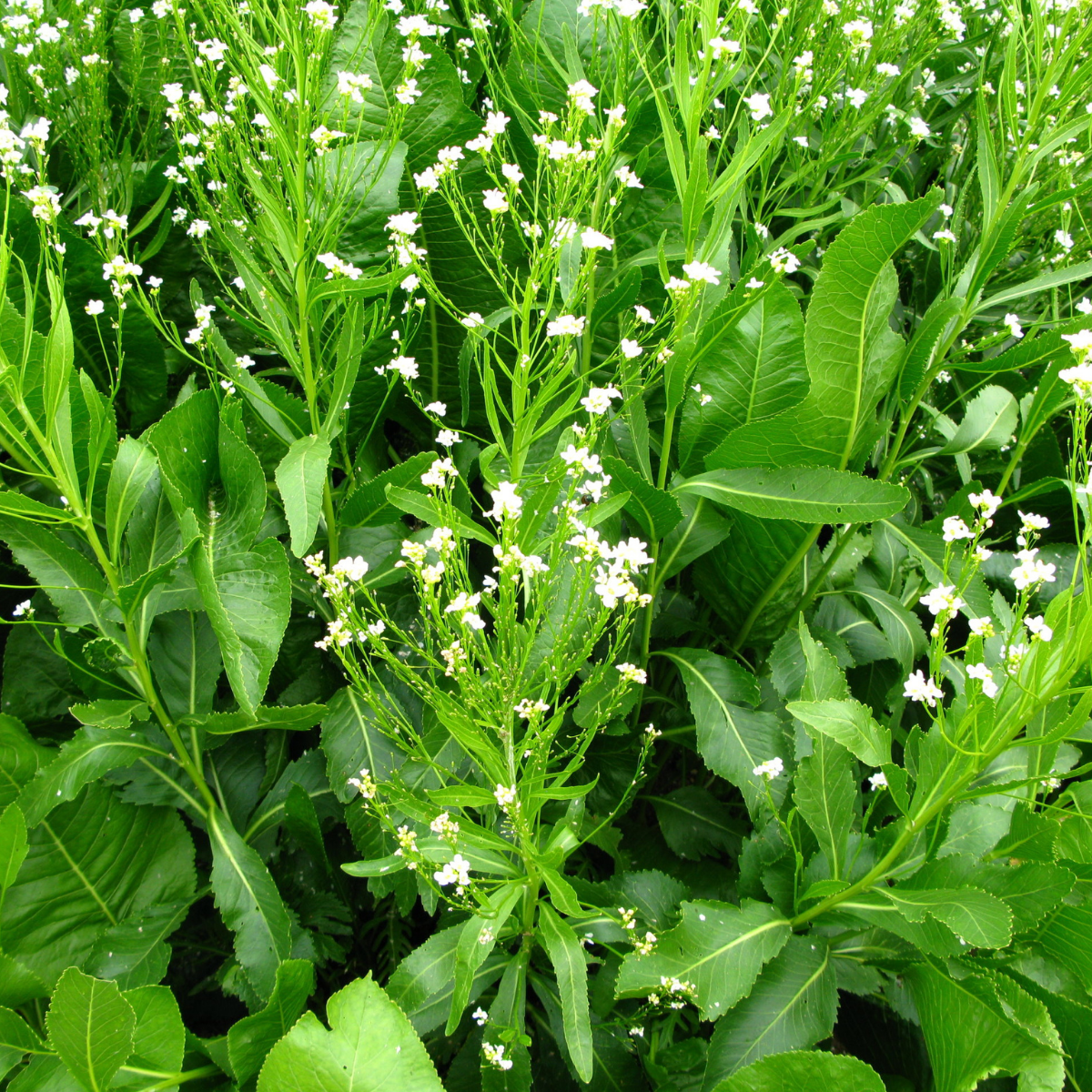A to Z of French Herbs - Horseradish - Raifort
Horseradish is a perennial plant that is part of the Brassicaceae family which includes mustard, wasabi, broccoli, cabbage, and radishes.
In French Horseradish is called raifort. The word horseradish is attested in English from the 1590’s and combines the word horse which was used in a figurative sense to mean strong or coarse and the word radish.
Although some believe that the term horseradish actually comes from a mispronunciation of the German word meerrettich as mare radish. Although many scholars have disputed this idea.
It can also be called wild horseradish, Cranson, German mustard, Brittany cran, spoon grass, Alsatian wasabi, Capuchin Mustard, Monk Mustard, Brittany Notch, English Notch, Brittany Cranson, Horse Radish, Mustard and Scorbut Grass.
The word "rhiradish" appeared in France in the 15th century. It comes from the ancient French raïz, which means "root", and strong whose meaning was once "tharve".
Technically horseradish is a root vegetable, not an herb but it’s used often in the same way as herbs are and so this is why I’ve included it in the A to Z of French Herbs.
It’s native to south Eastern Europe and Western Asia and was introduced to North America during European colonisations with both George Washington and Thomas Jefferson mentioning that they had horseradish growing in their gardens.
Horseradish grows in your garden up to 1.5 metres tall and has bright green leaves and a large tapered root. Its flowers are white or yellow flowers that are very fragrant. They have to be managed carefully though in the garden because they can become very invasive.
When harvesting horseradish the root is dug up and divided with one or more of the larger offshoots of the main root replanted to produce the following year’s crop.
Over 30,000 metric tonnes of horseradish is produced in Europe annually with Hungary producing the most at around 12,000 tonnes a year. In fact, now the United States produces more than 60% of the world’s production of horseradish
The intact horseradish root has little to no aroma. When cut or grated through enzymes from the plant cells digest and produce allyl isothiocyanate which is an oil. This oil irritates the sinuses and eyes.
When horseradish is exposed to the air or heat it loses its pungency darkens in colour and develops a bitter flavour.
Horseradish has been cultivated since antiquity and was known even to the Egyptians as far back as 1500 BC. The Greeks used it as an aphrodisiac.
Discords, Pliny the Elder and Cato all mentioned horseradish in their documentation. In the Pompeii ruins there is a mural that shows a horseradish plant and early Renaissance herbalists even noted its usage.
In the Middle Ages, they would use the root as a condiment on meats and the leaves, seeds and roots were used in traditional medicine especially to treat rheumatism.
Bizarrely in England and Germany, they would put horseradish in a beer along with mustard, juniper and potash sub-carbonate and this would be called rhearb beer.
In France, horseradish is mainly used as a condiment and in sauces. It’s particularly popular in the Alsace region as it goes perfectly with the meat-focused foods of Alsace.
A popular use of horseradish is the sauce au raifort which is often seen on menus in Alsace. Sauce Albert is a horseradish-based sauce created by Francois Tanty the Chef of Napoleon III. The occasion was the visit to France in 1853 by Prince Albert the husband of Queen Victoria. It was the first, peaceful visit to France by a member of the British Royal Family in 500 years.
Often people mistake horseradish and wasabi together but they’re completely different plants. Outside of Japan though many products sold as wasabi actually contain horseradish, vinegar, and food colour. This is because of a scarcity of the wasabi plant.
In France last year people were encouraged to use horseradish cream in replacement of mustard due to the mustard shortages that gripped France because of the lack of supply of mustard seeds from the Ukraine during the war in Ukraine.
Horseradish contractions a high amount of vitamin C and sodium, folate, and dietary fiber as well as other essential nutrients. It has antimicrobial, digestive antioxidants, and analgesic properties.
Interesting fact, did you know that horseradish was nicknamed the pepper of the poor!



